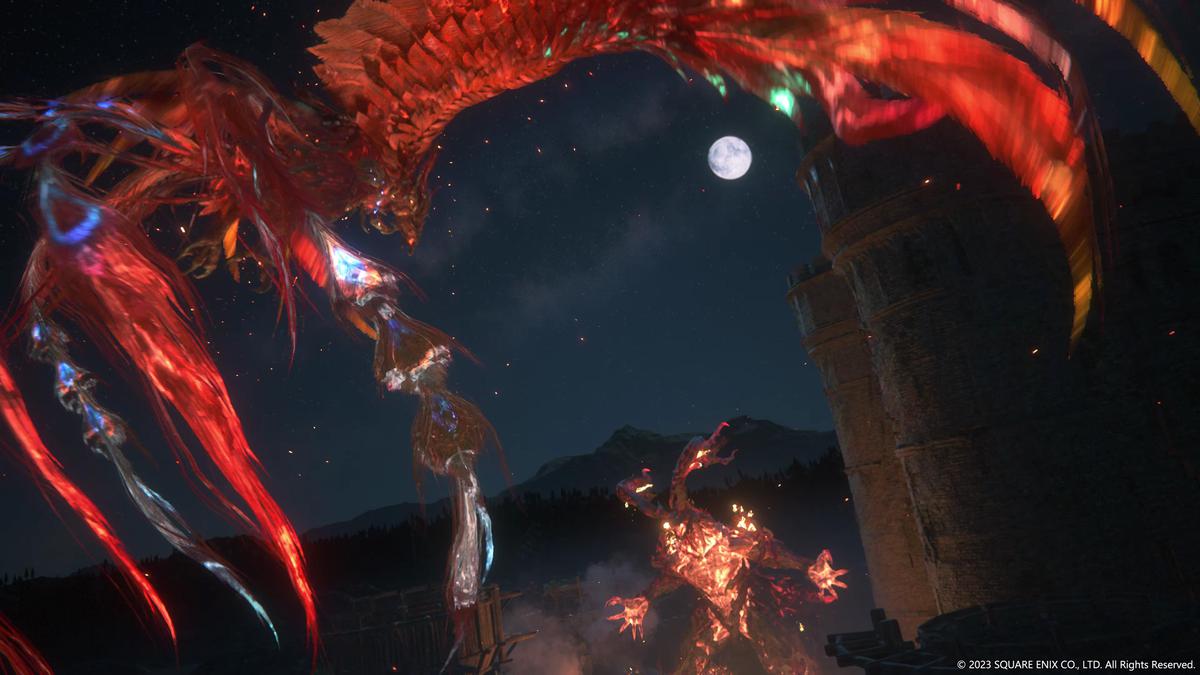- July 3, 2023
‘Final Fantasy XVI’ game review: A refreshing sequel with engaging combat and compelling storyline

Final Fantasy XVI
| Photo Credit: Special Arrangement
In recent years, Final Fantasy, once considered the pinnacle of Japanese Role Playing Games (RPGs), has embarked on a journey to adapt and remain relevant in a gaming landscape dominated by titles such as Witcher 3. Square Enix, the developer behind the series, has explored various approaches to secure a stable future for the franchise, ranging from the successful MMORPG (massively multiplayer online role-playing games) Final Fantasy XVI to the mixed reception received by the open-world adventure of XV. Notable highlights include the beloved remake of Final Fantasy VII and the triumph of Nier Automata. With the latest instalment, Final Fantasy XVI, Square Enix seems to have struck a chord.
The narrative of Final Fantasy XVI revolves around the life of Clive Rosfield, spanning his teenage years and beyond. Initially serving as a guardian to one of Rosaria’s most valuable assets —a kingdom within the realm of Valisthea — Clive’s journey takes an unexpected turn when he finds himself confronted with the sudden appearance of a second Eikon, a powerful guardian that forms a bond with certain individuals. These Eikons, akin to summons like Shiva and Ifrit from previous Final Fantasy games, are intertwined with the existence of magic in Valisthea, which revolves around colossal crystals known as Mothercrystals.
Final Fantasy XVI draws inspiration from iconic pieces of fantasy pop culture from the last decade, resembling how Bollywood directors plan their movies. The influence of Game of Thrones is particularly prominent, as the game deftly intertwines battles and intricate politics across various empires. One of the characters even bears a striking resemblance to Eddard Stark, complete with impressive hair. However, this influence is not necessarily bad, and the game successfully blends the elements of high fantasy with Final Fantasy staples such as ‘moogles’ and ‘chocobos’. Just be wary of the occasional profanity.
Departing from its turn-based roots, Final Fantasy XVI presents a thrilling real-time combat system. With influences from games including Devil May Cry and Yakuza, Clive engages in swordplay and wields a combination of ranged and close-quarter magic, resulting in flashy action sequences. Regardless of the buttons pressed, the combat remains visually impressive, featuring fluid combinations and active time events that allow Clive to teleport across the battlefield, swiftly dispatching enemies.
The simplicity in mechanics extends to other staple RPG elements, such as inventory management, equipment, and DPS-based statistics. While this streamlined approach offers ease of use and avoids overwhelming players, it comes at the expense of a limited loot system, placing the main focus on the storyline.
Where Final Fantasy XVI truly shines is in its unexpected features. Given the game’s intricate lore, often involving multiple characters, a single button press brings up the Active Time Lore, providing contextual reading on the ongoing events and characters. This feature proves invaluable for preventing players from becoming lost in the rich lore. It would be a welcome addition for not only games but also Netflix shows and other media.
While the visual presentation of Final Fantasy XVI is generally impressive, there are moments of inconsistency. Some character animations are fluid, while others appear robotic. The environments can feel somewhat sparse, offering little incentive for exploration. Even the crowds appear sparser than those found in Final Fantasy XII‘s towns.
Nevertheless, the game manages to weave an engaging tale, with well-executed motion capture and voice acting that breathes life into the characters. Clive, in particular, stands out as a memorable protagonist with a compelling backstory and an intriguing group of companions.
Final Fantasy XVI boldly deviates from many of the series’ established conventions, yet it remains a worthy entry in the franchise.




